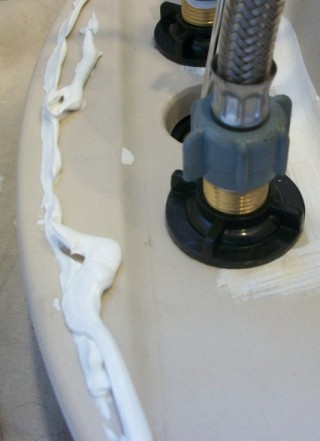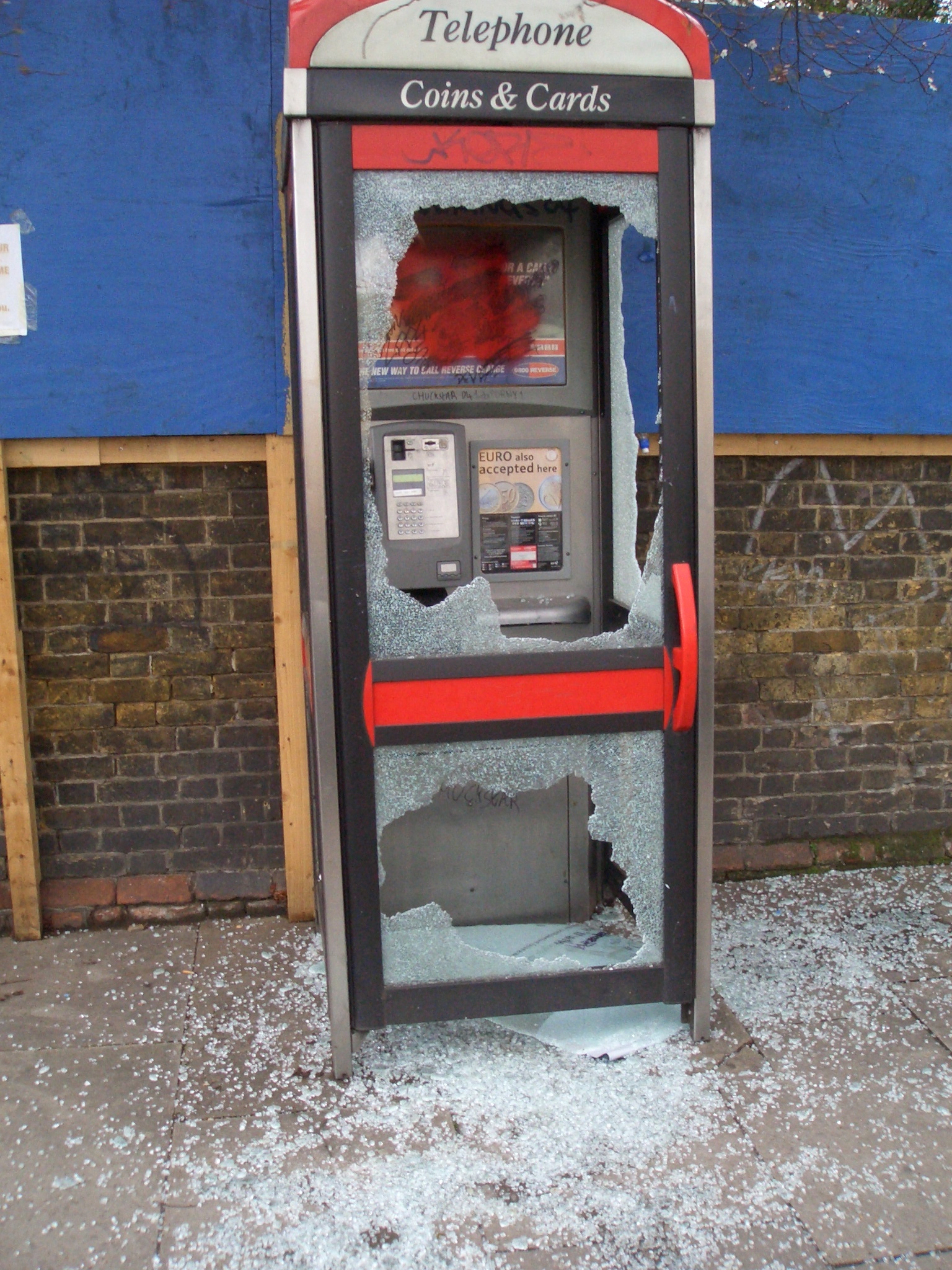|
Pavement Lights
Pavement lights (UK), vault lights (US), floor lights, or sidewalk prisms are flat-topped walk-on skylights, usually set into pavement (sidewalks) or floors to let sunlight into the space below. They often use anidolic lighting prisms to throw the light sideways under the building. They were developed in the 19th century, but declined in popularity with the advent of cheap electric lighting. Older cities and smaller centers around the world have or have had pavement lights. Most such lights are approximately a century old, although lights are being installed in some new construction. Uses Sidewalk prisms are a method of daylighting basements, and are able to serve as a sole source of illumination during the day. At night, lighting in the basements beneath produces a glowing sidewalk. Vault lights may be used to make subterranean space useful. They are more common in city centers, dense, high-rent areas where space is valuable. Historically, landlords took an interest in i ... [...More Info...] [...Related Items...] OR: [Wikipedia] [Google] [Baidu] |
Deck Prism
A deck prism is a prism inserted into the deck of a ship to provide light down below. For centuries, sailing ships used deck prisms to provide a safe source of natural sunlight to illuminate areas below decks. Before electricity, light below a vessel's deck was provided by candles, oil and kerosene lamps—all dangerous aboard a wooden ship. The deck prism laid flush into the deck, the glass prism refracted and dispersed natural light into the space below from a small deck opening without weakening the planks or becoming a fire hazard. In normal usage, the prism hangs below the overhead and disperses the light sideways; the top is flat and installed flush with the deck, becoming part of the deck. The lens shapes were naturally derived from the process of handmaking the glass on an 'iron' and would have predated the ability to manufacture flat glass. (A plain flat glass window would just form a single bright spot below—not very useful for general illumination—hence the prismat ... [...More Info...] [...Related Items...] OR: [Wikipedia] [Google] [Baidu] |
Waveguide
A waveguide is a structure that guides waves, such as electromagnetic waves or sound, with minimal loss of energy by restricting the transmission of energy to one direction. Without the physical constraint of a waveguide, wave intensities decrease according to the inverse square law as they expand into three-dimensional space. There are different types of waveguides for different types of waves. The original and most common meaningInstitute of Electrical and Electronics Engineers, “The IEEE standard dictionary of electrical and electronics terms”; 6th ed. New York, N.Y., Institute of Electrical and Electronics Engineers, c1997. IEEE Std 100-1996. d. Standards Coordinating Committee 10, Terms and Definitions; Jane Radatz, (chair)/ref> is a hollow conductive metal pipe used to carry high frequency radio waves, particularly microwaves. Dielectric waveguides are used at higher radio frequencies, and transparent dielectric waveguides and optical fibers serve as waveguides f ... [...More Info...] [...Related Items...] OR: [Wikipedia] [Google] [Baidu] |
Fiberoptic
An optical fiber, or optical fibre in Commonwealth English, is a flexible, transparent fiber made by drawing glass (silica) or plastic to a diameter slightly thicker than that of a human hair. Optical fibers are used most often as a means to transmit light between the two ends of the fiber and find wide usage in fiber-optic communications, where they permit transmission over longer distances and at higher bandwidths (data transfer rates) than electrical cables. Fibers are used instead of metal wires because signals travel along them with less loss; in addition, fibers are immune to electromagnetic interference, a problem from which metal wires suffer. Fibers are also used for illumination and imaging, and are often wrapped in bundles so they may be used to carry light into, or images out of confined spaces, as in the case of a fiberscope. Specially designed fibers are also used for a variety of other applications, some of them being fiber optic sensors and fiber lasers. Opt ... [...More Info...] [...Related Items...] OR: [Wikipedia] [Google] [Baidu] |
Translucent Concrete
Translucent concrete (also: light-transmitting concrete) is a concrete based building material with light-transmissive properties due to embedded light optical elements — usually optical fibers. Light is conducted through the stone from one end to the other. Therefore, the fibers have to go through the whole object. This results in a certain light pattern on the other surface, depending on the fiber structure. Shadows cast onto one side appear as silhouettes through the material. Translucent concrete is used in fine architecture as a façade material and for cladding of interior walls. Light-transmitting concrete has also been applied to various design products. Several ways of producing translucent concrete exist. All are based on a fine grain concrete (ca. 95%) and only 5% light conducting elements that are added during casting process. After setting, the concrete is cut to plates or stones with standard machinery for cutting stone materials. Due to bends in the fibers and ro ... [...More Info...] [...Related Items...] OR: [Wikipedia] [Google] [Baidu] |
Caulking
Caulk or, less frequently, caulking is a material used to seal joints or seams against leakage in various structures and piping. The oldest form of caulk consisted of fibrous materials driven into the wedge-shaped seams between boards on wooden boats or ships. Cast iron sewerage pipe were formerly caulked in a similar way. Riveted seams in ships and boilers were formerly sealed by hammering the metal. Modern caulking compounds are flexible sealing compounds used to close up gaps in buildings and other structures against water, air, dust, insects, or as a component in firestopping. In the tunnelling industry, caulking is the sealing of joints in segmental precast concrete tunnels, commonly by using concrete. Historical uses Wooden shipbuilding Traditional caulking (also spelled calking) on wooden vessels uses fibers of cotton and oakum ( hemp) soaked in pine tar. These fibers are driven into the wedge-shaped seam between planks, with a caulking mallet and a broad chisel- ... [...More Info...] [...Related Items...] OR: [Wikipedia] [Google] [Baidu] |
Thermal Conductivity
The thermal conductivity of a material is a measure of its ability to conduct heat. It is commonly denoted by k, \lambda, or \kappa. Heat transfer occurs at a lower rate in materials of low thermal conductivity than in materials of high thermal conductivity. For instance, metals typically have high thermal conductivity and are very efficient at conducting heat, while the opposite is true for insulating materials like Rockwool or Styrofoam. Correspondingly, materials of high thermal conductivity are widely used in heat sink applications, and materials of low thermal conductivity are used as thermal insulation. The reciprocal of thermal conductivity is called thermal resistivity. The defining equation for thermal conductivity is \mathbf = - k \nabla T, where \mathbf is the heat flux, k is the thermal conductivity, and \nabla T is the temperature gradient. This is known as Fourier's Law for heat conduction. Although commonly expressed as a scalar, the most general form of th ... [...More Info...] [...Related Items...] OR: [Wikipedia] [Google] [Baidu] |
Reinforced Concrete
Reinforced concrete (RC), also called reinforced cement concrete (RCC) and ferroconcrete, is a composite material in which concrete's relatively low tensile strength and ductility are compensated for by the inclusion of reinforcement having higher tensile strength or ductility. The reinforcement is usually, though not necessarily, steel bars ( rebar) and is usually embedded passively in the concrete before the concrete sets. However, post-tensioning is also employed as a technique to reinforce the concrete. In terms of volume used annually, it is one of the most common engineering materials. In corrosion engineering terms, when designed correctly, the alkalinity of the concrete protects the steel rebar from corrosion. Description Reinforcing schemes are generally designed to resist tensile stresses in particular regions of the concrete that might cause unacceptable cracking and/or structural failure. Modern reinforced concrete can contain varied reinforcing materials made of ... [...More Info...] [...Related Items...] OR: [Wikipedia] [Google] [Baidu] |
Armored Pavement Light Element
Armour (British English) or armor (American English; see spelling differences) is a covering used to protect an object, individual, or vehicle from physical injury or damage, especially direct contact weapons or projectiles during combat, or from a potentially dangerous environment or activity (e.g. cycling, construction sites, etc.). Personal armour is used to protect soldiers and war animals. Vehicle armour is used on warships, armoured fighting vehicles, and some mostly ground attack combat aircraft. A second use of the term ''armour'' describes armoured forces, armoured weapons, and their role in combat. After the development of armoured warfare, tanks and mechanised infantry and their combat formations came to be referred to collectively as "armour". Etymology The word "armour" began to appear in the Middle Ages as a derivative of Old French. It is dated from 1297 as a "mail, defensive covering worn in combat". The word originates from the Old French , itself derived ... [...More Info...] [...Related Items...] OR: [Wikipedia] [Google] [Baidu] |
Toughened Glass
Tempered or toughened glass is a type of safety glass processed by controlled thermal or chemical treatments to increase its strength compared with normal glass. Tempering puts the outer surfaces into compression and the interior into tension. Such stresses cause the glass, when broken, to shatter into small granular chunks instead of splintering into jagged shards as ordinary annealed glass does. The granular chunks are less likely to cause injury. Tempered glass is used for its safety and strength in a variety of applications, including passenger vehicle windows, shower doors, aquariums, architectural glass doors and tables, refrigerator trays, mobile phone screen protectors, bulletproof glass components, diving masks, and plates and cookware. Properties Tempered glass is about four times stronger than annealed glass. The greater contraction of the inner layer during manufacturing induces compressive stresses in the surface of the glass balanced by tensile stresses in the ... [...More Info...] [...Related Items...] OR: [Wikipedia] [Google] [Baidu] |
Laminated Glass
Laminated glass (LG) is a type of safety glass that holds together when shattered. In the event of breaking, it is held in place by a thin polymer interlayer, typically of polyvinyl butyral (PVB), ethylene-vinyl acetate (EVA), lonoplast polymers, cast in place (CIP) liquid resin, or thermoplastic polyurethane (TPU), between its two or more layers of glass. The interlayer, made through heat and pressure, keeps the layers of glass bonded even when broken, and its high strength prevents the glass from breaking up into large sharp pieces. This produces a characteristic "spider web" cracking pattern when the impact is not enough to completely pierce the glass. The thermoset EVA offers a complete bonding (cross-linking) with the material whether it is glass, polycarbonate (PC), or other types of products. Laminated glass is used for architecture, glazing, automobile safety, photovoltaic, UV protection, and artistic expression. The most common use of laminated glass is skylight gla ... [...More Info...] [...Related Items...] OR: [Wikipedia] [Google] [Baidu] |
Glass Floor
Glass floors are made with transparent glass when it is useful to view something from above or below; whereas translucent glass is used when there is no need to view through. In either case, toughened glass is usually chosen, for its durability and resistance to breakage. Flooring Translucent floors are sometimes set into outdoor sidewalks and pavements, or the floors of well-lit interior spaces, to daylight the space below. These are generally called pavement lights, and have a long history. Glass as a flooring material is used in both residential and commercial structures. Special hollow glass blocks known as '"glass pavers" are often used in combination with a metal frame. Glass floors are often lit from below with natural or artificial light, or may be treated as ordinary floor surfaces illuminated from above. A German manufacturer of squash court floors has diversified into making glass floors for other sports, such as basketball. Their glass floors usually are tra ... [...More Info...] [...Related Items...] OR: [Wikipedia] [Google] [Baidu] |






.jpg)
